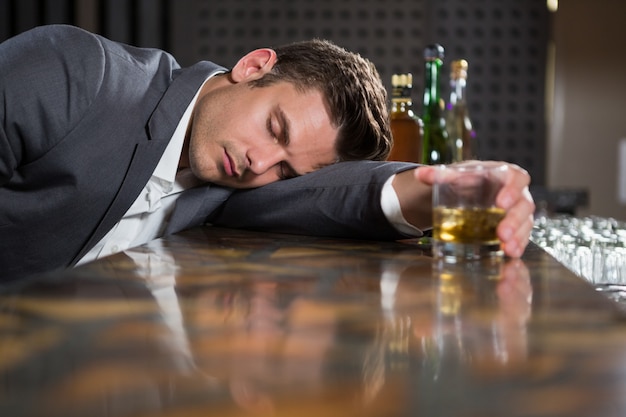The Drunk Patrick Scenario: Navigating Alcohol's Impact
Alcohol consumption is deeply woven into the fabric of many societies, often associated with celebration, relaxation, and social bonding. However, the line between responsible enjoyment and overconsumption can be easily blurred, leading to a state commonly known as being "drunk." This article delves into the multifaceted concept of being drunk, exploring its definition, physiological effects, societal implications, and the potential dangers associated with it, using the hypothetical "Drunk Patrick" as a relatable figure to illustrate these points.
Understanding what it means to be drunk, beyond just the immediate feeling of euphoria, is crucial for personal safety and public well-being. From impaired judgment to long-term health risks, the consequences of excessive alcohol intake can be profound. We aim to provide comprehensive, trustworthy information to help readers make informed decisions about alcohol, adhering to principles of expertise, authoritativeness, and trustworthiness (E-E-A-T) and addressing the vital aspects of Your Money or Your Life (YMYL) topics related to health and safety.
Table of Contents
- What Does "Drunk" Really Mean?
- The Science Behind Inebriation
- The "Drunk Patrick" Archetype: Common Behaviors
- Beyond the Moment: Short-Term Risks
- The Slippery Slope: When "Drunk Patrick" Becomes "A Drunk"
- Long-Term Health Consequences of Chronic Alcohol Abuse
- Navigating Social Situations: Responsible Choices
- Legal Ramifications of Public Intoxication
What Does "Drunk" Really Mean?
The word "drunk" carries a significant weight, evolving over centuries. Historically, the term has been in use for at least 600 years, with its core meaning remaining consistent. At its most fundamental, "drunk" is the past participle of "drink," but its common usage refers to a specific state of being. As the data suggests, it describes a temporary condition where a person's mental and physical faculties are impaired due to the consumption of alcohol or intoxicating substances. This impairment means one is "unable to speak or act in the usual way because of having had too much" alcohol.
To be "drunk" signifies being in a temporary state in which one's physical and mental faculties are impaired by an excess of alcoholic drink. This often involves a feeling of euphoria initially, but quickly progresses to a loss of coordination, slurred speech, and impaired judgment. Someone who is drunk has consumed so much alcohol that they cannot speak clearly or behave sensibly. For instance, Stewart could not remember exactly why he had done it because he was so drunk, highlighting the memory blackouts that can occur. The state is also described as being "intoxicated as a result of excessive alcohol consumption, usually by drinking alcoholic beverages." It can also mean being "overcome or dominated by a strong feeling," or "elated or emboldened," often followed by "with or on," indicating the emotional impact of alcohol.
The Science Behind Inebriation
When someone like "Drunk Patrick" consumes alcohol, it doesn't just stay in the stomach. Alcohol (ethanol) is rapidly absorbed into the bloodstream, primarily through the small intestine, and then distributed throughout the body, including the brain. The liver metabolizes alcohol, but it can only do so at a certain rate. When alcohol is consumed faster than the liver can process it, the blood alcohol concentration (BAC) rises, leading to intoxication.
Alcohol is a central nervous system depressant. This means it slows down brain activity, affecting communication pathways. It interferes with neurotransmitters, the brain's chemical messengers. For example, it enhances the effects of GABA (gamma-aminobutyric acid), a neurotransmitter that reduces brain activity, leading to feelings of relaxation and sedation. Conversely, it inhibits glutamate, an excitatory neurotransmitter, which further contributes to slowed responses and impaired cognitive function. This complex interaction is what causes the various signs of someone being drunk, from slurred speech to poor balance. The higher the BAC, the more profound these effects become, moving from mild euphoria to severe impairment, and in extreme cases, alcohol poisoning.
The "Drunk Patrick" Archetype: Common Behaviors
The hypothetical "Drunk Patrick" serves as a useful archetype for understanding the typical behaviors associated with intoxication. These behaviors stem directly from alcohol's impact on the brain and body. While individual responses vary based on factors like tolerance, body weight, and rate of consumption, certain patterns are universally recognized as signs of someone being drunk.
Physical Manifestations of Intoxication
As alcohol levels rise, the physical signs become more apparent. These are often the first indicators that someone is becoming inebriated:
- Slurred Speech: The muscles controlling speech become less coordinated, making words difficult to articulate clearly.
- Impaired Coordination: Balance issues, stumbling, and difficulty with fine motor skills (like picking up objects or walking a straight line) are common. This is why driving while drunk is so dangerous.
- Slowed Reflexes: Reaction times significantly decrease, making quick responses difficult.
- Flushed Skin: Alcohol causes blood vessels to dilate, leading to a reddish appearance, particularly on the face.
- Nystagmus (Involuntary Eye Movements): The eyes may dart or twitch involuntarily.
- Vomiting: The body's attempt to expel excess alcohol, especially when consumed rapidly.
These physical signs are a direct result of alcohol's depressive effect on the central nervous system, hindering the brain's ability to send precise signals to the body.
Cognitive & Emotional Shifts
Beyond the physical, being drunk profoundly affects one's mental and emotional state. The initial feeling of euphoria can give way to a range of unpredictable emotions and impaired thought processes:
- Impaired Judgment: Decision-making abilities are severely compromised, leading to risky behaviors or poor choices. This is why someone like "Drunk Patrick" might engage in actions they later regret.
- Memory Loss (Blackouts): As seen with Stewart, individuals may experience partial or complete memory loss for events that occurred while they were intoxicated. This is a sign of significant brain impairment.
- Reduced Inhibition: Alcohol lowers inhibitions, making individuals more likely to say or do things they wouldn't normally. This can range from overly friendly behavior to aggression.
- Mood Swings: Emotions can become exaggerated and volatile. A person might swing from being happy and outgoing to irritable, sad, or angry in a short period.
- Overconfidence: Despite impaired abilities, a drunk person may feel overly confident in their capabilities, leading to dangerous situations like attempting to drive.
These cognitive and emotional changes are what make the "Drunk Patrick" scenario unpredictable and potentially hazardous, not just for the individual but for those around them.
Beyond the Moment: Short-Term Risks
The immediate consequences of being drunk extend far beyond just feeling unwell. The impaired judgment and coordination associated with intoxication significantly increase the risk of various accidents and dangerous situations. For example, falls, car accidents, and other injuries are common when someone is drunk. The National Institute on Alcohol Abuse and Alcoholism (NIAAA) consistently highlights that alcohol impairment is a leading factor in traffic fatalities and serious injuries.
Beyond physical harm, there are significant social and legal risks. Being "drunk and disorderly" is a recognized offense in many jurisdictions, leading to arrests and legal repercussions. Police arrested him for being drunk and disorderly, serves as a stark reminder of the public consequences. This includes behaving in a noisy or violent way in a public place because you are drunk. Furthermore, impaired judgment can lead to regrettable social interactions, damaged relationships, or engaging in unprotected sex, increasing the risk of sexually transmitted infections. The short-term risks underscore the importance of responsible alcohol consumption and understanding one's limits.
The Slippery Slope: When "Drunk Patrick" Becomes "A Drunk"
While occasional intoxication might seem harmless to some, frequent and excessive drinking can lead to a much more serious condition: alcohol dependence or alcoholism. The data provided explicitly states, "If you do it too often, you may become a drunk, which is another, blunter, word for alcoholic." This transition from a temporary state of being "drunk" to a chronic condition of being "a drunk" is a critical public health concern.
Alcoholism is a chronic disease characterized by an impaired ability to stop or control alcohol use despite adverse social, occupational, or health consequences. It involves a strong craving for alcohol, continued use despite problems, and a loss of control over drinking. The body can develop a tolerance, meaning more alcohol is needed to achieve the same effect, and physical dependence, where withdrawal symptoms occur if drinking stops. This progression is insidious, often starting with social drinking that gradually escalates into a reliance on alcohol to cope with daily life or simply to feel "normal."
Recognizing Problematic Drinking
It's vital to recognize the signs that someone, perhaps even "Drunk Patrick," might be moving from occasional heavy drinking to problematic alcohol use. These signs are not always obvious, but they indicate a growing dependence:
- Increased Tolerance: Needing more alcohol to feel the effects.
- Withdrawal Symptoms: Experiencing nausea, sweating, tremors, anxiety, or insomnia when not drinking.
- Loss of Control: Inability to limit drinking once started.
- Neglect of Responsibilities: Missing work or school, neglecting family duties due to drinking.
- Continued Use Despite Harm: Drinking even when it causes problems with health, relationships, or work.
- Craving: A strong urge or need to drink.
- Time Spent: Spending a lot of time drinking, recovering from drinking, or trying to get alcohol.
If these patterns emerge, it's a clear signal that the individual is no longer just occasionally drunk but is developing a serious alcohol problem that requires intervention and support.
Long-Term Health Consequences of Chronic Alcohol Abuse
The long-term effects of chronic alcohol abuse are devastating and impact nearly every organ system in the body. While a single instance of being drunk might lead to a hangover, years of excessive drinking can cause irreversible damage. The World Health Organization (WHO) identifies alcohol as a causal factor in more than 200 disease and injury conditions.
Key health consequences include:
- Liver Disease: From fatty liver to alcoholic hepatitis and cirrhosis, liver damage is one of the most common and severe outcomes. Cirrhosis is irreversible and can lead to liver failure.
- Cardiovascular Problems: High blood pressure, irregular heartbeats (arrhythmias), and weakened heart muscle (cardiomyopathy) are associated with long-term heavy drinking.
- Brain Damage: Chronic alcohol use can lead to brain shrinkage, cognitive impairments, memory problems, and an increased risk of dementia. Conditions like Wernicke-Korsakoff Syndrome, characterized by severe memory loss and confusion, are directly linked to alcohol-induced nutritional deficiencies.
- Cancer: Alcohol consumption is a known risk factor for various cancers, including those of the mouth, throat, esophagus, liver, breast, and colon.
- Pancreatitis: Inflammation of the pancreas, a gland vital for digestion and blood sugar regulation, can be caused by chronic heavy drinking.
- Weakened Immune System: Alcohol can suppress the immune system, making individuals more susceptible to infections like pneumonia and tuberculosis.
- Mental Health Issues: While alcohol may initially seem to alleviate stress or anxiety, chronic use can worsen depression, anxiety disorders, and other mental health conditions.
These severe health outcomes underscore the critical importance of addressing alcohol misuse before it progresses to chronic abuse. The journey from "Drunk Patrick" to someone suffering from chronic alcohol-related illnesses is a path fraught with severe health risks.
Navigating Social Situations: Responsible Choices
Given the potential risks associated with being drunk, making responsible choices in social settings is paramount. Understanding how to manage alcohol consumption, both for oneself and for others, is a vital life skill. Responsible drinking means consuming alcohol in moderation, if at all, and being aware of its effects.
Here are some tips for responsible alcohol consumption:
- Know Your Limits: Understand how much alcohol your body can process without becoming impaired. Factors like body weight, gender, and food intake play a role.
- Eat Before and During Drinking: Food slows down alcohol absorption.
- Pace Yourself: Drink slowly, alternating alcoholic beverages with non-alcoholic ones like water or soda.
- Avoid Binge Drinking: This is defined as consuming a large amount of alcohol in a short period, leading to rapid intoxication.
- Designate a Driver: Never drink and drive, and ensure that anyone you are with has a safe way to get home.
- Be Aware of Medications: Alcohol can interact dangerously with many prescription and over-the-counter drugs.
- Don't Pressure Others: Respect individuals' choices not to drink or to drink less.
For those witnessing someone like "Drunk Patrick" becoming overly intoxicated, intervening responsibly is crucial. This might involve cutting off their alcohol supply, ensuring they have a safe ride home, or seeking medical attention if signs of alcohol poisoning (e.g., unconsciousness, slow breathing, cold skin) are present.
Support & Resources for Alcohol-Related Issues
If you or someone you know is struggling with problematic drinking or alcoholism, help is available. Recognizing the problem is the first courageous step. There are numerous resources designed to provide support, guidance, and treatment:
- Medical Professionals: A doctor can assess the situation, provide medical advice, and refer to specialists.
- Alcoholics Anonymous (AA): A global fellowship offering peer support for recovery from alcoholism through a 12-step program.
- National Institute on Alcohol Abuse and Alcoholism (NIAAA): Provides extensive information and resources on alcohol and health.
- Substance Abuse and Mental Health Services Administration (SAMHSA): Offers a national helpline and treatment locator for substance abuse and mental health services.
- Therapy and Counseling: Individual or group therapy can help address the underlying causes of alcohol misuse and develop coping strategies.
- Rehabilitation Centers: Inpatient or outpatient programs offer structured treatment environments.
Seeking help is a sign of strength, and with the right support, recovery from alcohol dependence is possible. It’s important to remember that problematic drinking is a treatable condition, and no one has to face it alone.
Legal Ramifications of Public Intoxication
The state of being drunk doesn't just affect an individual's health and safety; it also has significant legal implications, particularly when it occurs in public spaces. The concept of "drunk and disorderly" is a legal charge that can lead to arrest and penalties. As the provided data indicates, "Police arrested him for being drunk and disorderly," highlighting a common scenario where public intoxication crosses legal boundaries.
Laws regarding public intoxication vary by jurisdiction, but generally, they pertain to individuals who are so intoxicated in a public place that they pose a danger to themselves or others, or are causing a disturbance. This could include:
- Disruptive Behavior: Being excessively noisy, engaging in fights, or otherwise disturbing the peace.
- Inability to Care for Oneself: Being so impaired that one cannot walk, stand, or is passed out in public.
- Endangering Others: Actions that put other people at risk, such as attempting to drive or engaging in reckless behavior.
Consequences for such offenses can range from fines and community service to jail time, depending on the severity of the behavior and prior offenses. Beyond "drunk and disorderly," other alcohol-related legal issues include Driving Under the Influence (DUI) or Driving While Intoxicated (DWI), which carry much more severe penalties due to the high risk of injury or death they pose. Understanding these legal risks is crucial, as the immediate euphoria of being drunk can quickly lead to serious and lasting legal troubles.
Conclusion
The journey through the "Drunk Patrick" scenario illuminates the multifaceted nature of alcohol intoxication. We've explored that being "drunk" is more than just a feeling; it's a temporary state where physical and mental faculties are impaired, leading to a range of predictable behaviors and unpredictable outcomes. From the initial euphoria to the slurred speech, impaired judgment, and potential memory blackouts, the effects are profound. We also delved into the serious short-term risks, such as accidents and legal troubles, and the severe long-term health consequences that arise if occasional heavy drinking escalates into chronic alcohol abuse, where "Drunk Patrick" risks becoming "a drunk" or an alcoholic.
Understanding these aspects is not merely academic; it's a matter of personal and public safety. Responsible alcohol consumption, recognizing the signs of problematic drinking, and knowing where to find support are vital. We hope this comprehensive guide has provided valuable insights into the complexities of alcohol's impact. We encourage you to share your thoughts or experiences in the comments below, or to explore other articles on our site related to health and well-being. Your insights can help foster a community of informed and responsible choices.

Premium Photo | Drunk man lying on a counter with glass of whisky

Drunk man lying on ground hi-res stock photography and images - Alamy

Drunk guy with a bottle of vine indoors Stock Photo - Alamy